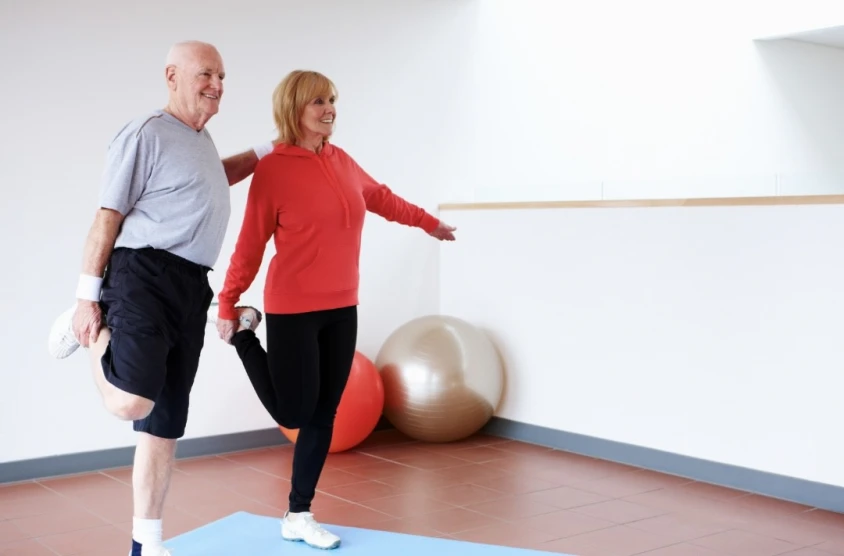The Centers for Advanced Orthopaedics is redefining the way musculoskeletal care is delivered across the region with locations throughout Maryland, DC, Virginia and Pennsylvania.
Balance & Vertigo
How long can you balance on one leg? If you’re under the age of 40, you should be able to balance for 43 seconds with your eyes open and 9 seconds with your eyes closed. By the age of 65, this drops to 27 seconds and 3 seconds respectively.1 How do you compare? 
Our success with balance is determined by three inputs: vision, somatosensation, and the vestibular system. Most people are visually dominant which is why single leg balance decreases by over 80% with the eyes closed. Somatosensation is what we feel through our feet and our awareness of our body in space. This can be disrupted by changes in surfaces, like switching from walking on smooth surfaces to a rocky trail. The vestibular system is a small system in the inner ear. It includes three semicircular canals that are filled with fluid. When this fluid moves, it alerts us to changes in position.
Vertigo is a disruption of the vestibular system. In many cases, the fluid in the inner ear provides the wrong signal. This occurs when small particles in the semicircular canals break off and move the fluid inside, causing us to perceive movement, even when no movement is occurring. There is an increase in particle movement with changes in position, like going from laying down to sitting which then causes an increase in vertigo symptoms.
Balance can be improved through Physical Therapy by focusing on strength in the foot/ankle and also the core muscles of the hips and pelvis to improve stability. Like any skill development, repetitive training will improve balance for patients. In addition, Physical Therapy is effective in treating vertigo by positioning the body in ways to restore the inner ear particles back to their original position.
1 Springer BA, Marin R, Cyhan T, Roberts H, Gill NW. “Normative Values for the Unipedal Stance Test with Eyes Open and Closed.” Journal of Geriatric Physical Therapy. 2007; 30(1): 8-15. doi:10.1519/00139143-200704000-00003.